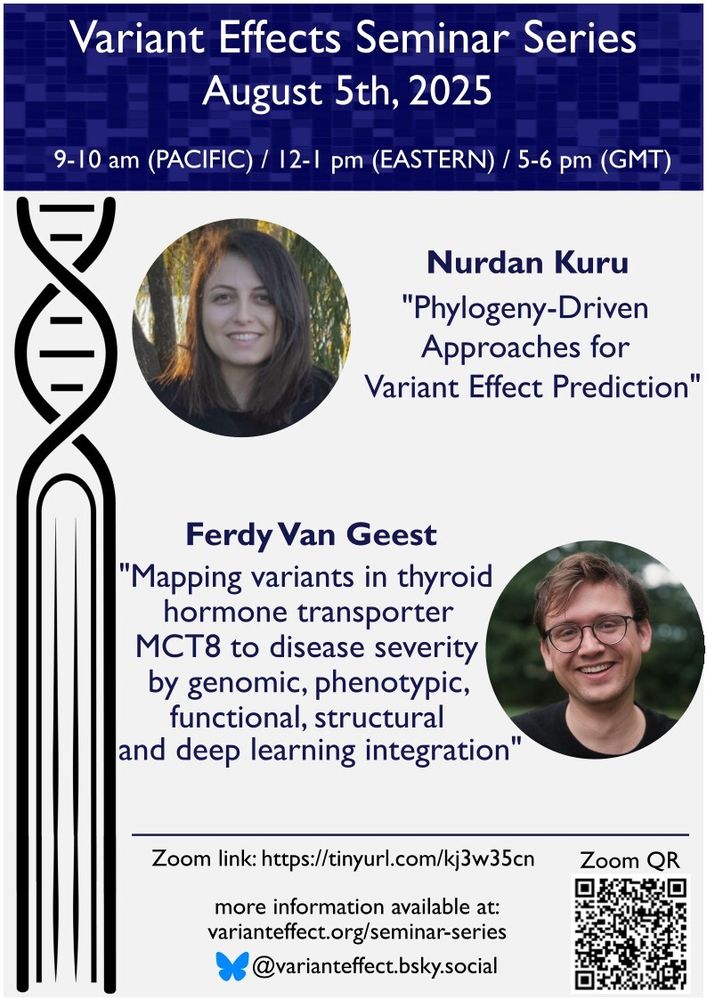
Statistical genetics, phylogenetics, and optimization
Many thanks to @nehircanozdemir.bsky.social for the beautiful illustration of PHACE!
🔗 doi.org/10.1093/molbev/msaf150
#evobio #molbio #phylogenetics

Many thanks to @nehircanozdemir.bsky.social for the beautiful illustration of PHACE!
Nurdan Kuru @nurdankuru.bsky.social shares phylogeny-aware methods for variant effect prediction.
Ferdy van Geest dives into MCT8 variants & thyroid disease. Computational meets clinical! #Genetics #RareDisease #MedicalGenetics ℹ️ www.varianteffect.org/seminar-seri...

Nurdan Kuru @nurdankuru.bsky.social shares phylogeny-aware methods for variant effect prediction.
Ferdy van Geest dives into MCT8 variants & thyroid disease. Computational meets clinical! #Genetics #RareDisease #MedicalGenetics ℹ️ www.varianteffect.org/seminar-seri...

TY @NatureComms @RockefellerUniv team, collaborators @erichjarvis @asiepel labs
🧵👇
TY @NatureComms @RockefellerUniv team, collaborators @erichjarvis @asiepel labs
🧵👇


